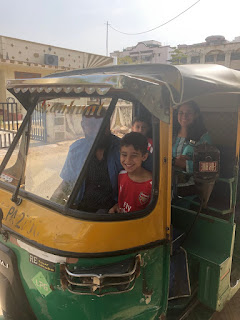South and Central Asia Fulbright Conference 25/02-27/02
Right from the opening remarks to the HUGE finale of Fulbright performances, I was in awe to be amongst very intelligent and reflective people. Throughout the 3 days I carried with me the inspirational words of P.S. Gangadhar, the Director of Ministry of External Affairs, from the government of India. He talked about how the "world is one family" and that we are "Ambassadors of Humankind" and the "power of diplomacy-- people to people is what Fulbright is all about. I was energised and ready to go.
I marked my schedule and chose all the panels I was going to see. I listened to young researchers just starting out to veteran researchers on topics such as The Garden as an Abode of Peace to Narratives of Young Women in the Underserved Pockets of New Delhi to The Dalai Lama is Tibet: Deterritorializing Nationhood, Citizenship, and Activism to Cross-Cultural Developments in Civic/Citizenship Education.
Each person on each panel spoke with such enthusiasm about their research topic and you could feel their passion exuding through the microphone. While I appreciated and respected their thinking and presentation, I was viewing their presentations with a critical eye or you could say conducting a mini-research project. Based on my own inquiry project, I was wondering how many of the panel speakers would have interactive conversations about their research. The result of my very small sample size revealed that most panel speakers spoke for 15 minutes using a power point presentation. Then on the 2nd day at 3:15pm there was the panel that I was on and that was a whole different story. Stay tuned for more on that tomorrow...
I want to end with this question; Why were there so few presentations that were interactive?




Comments
Post a Comment